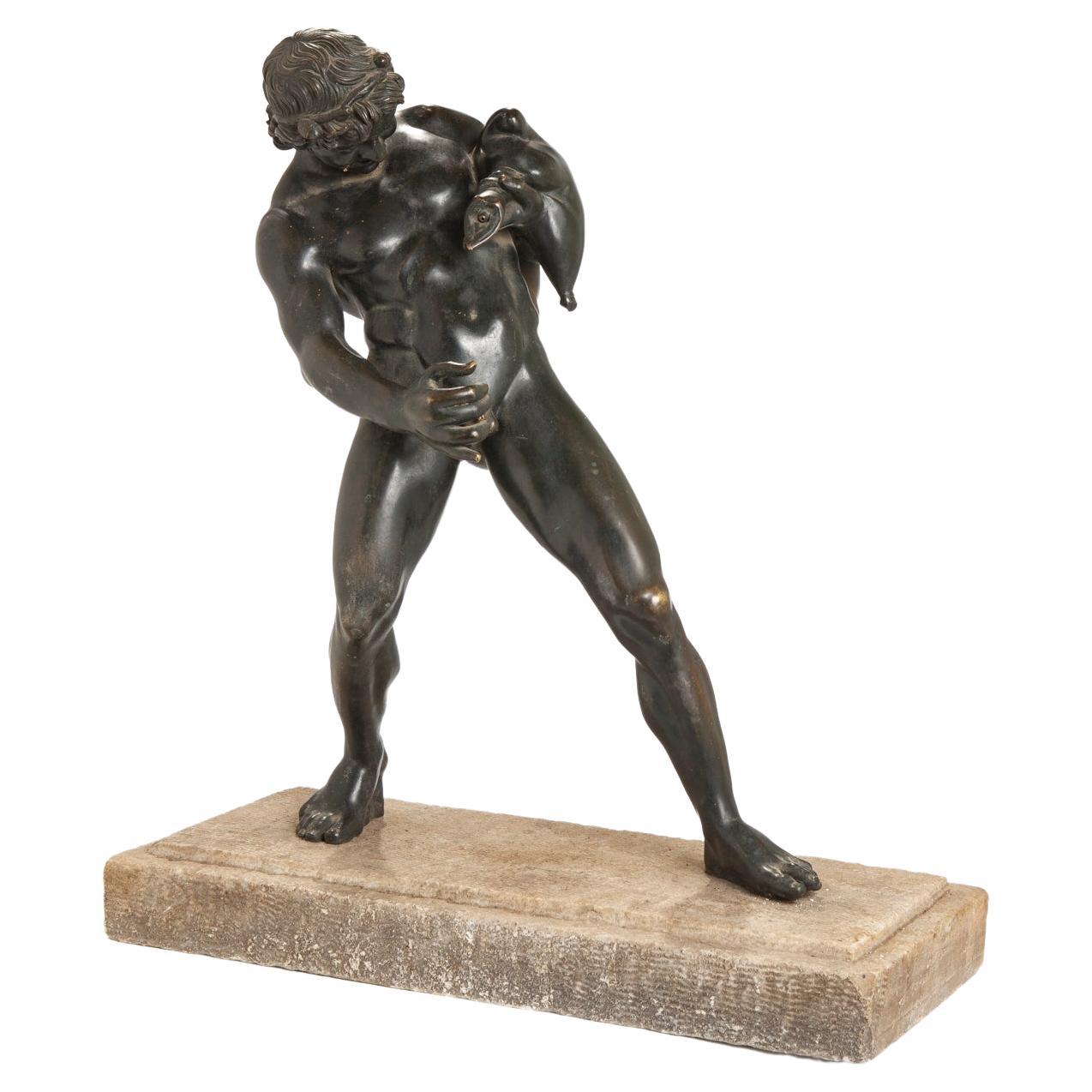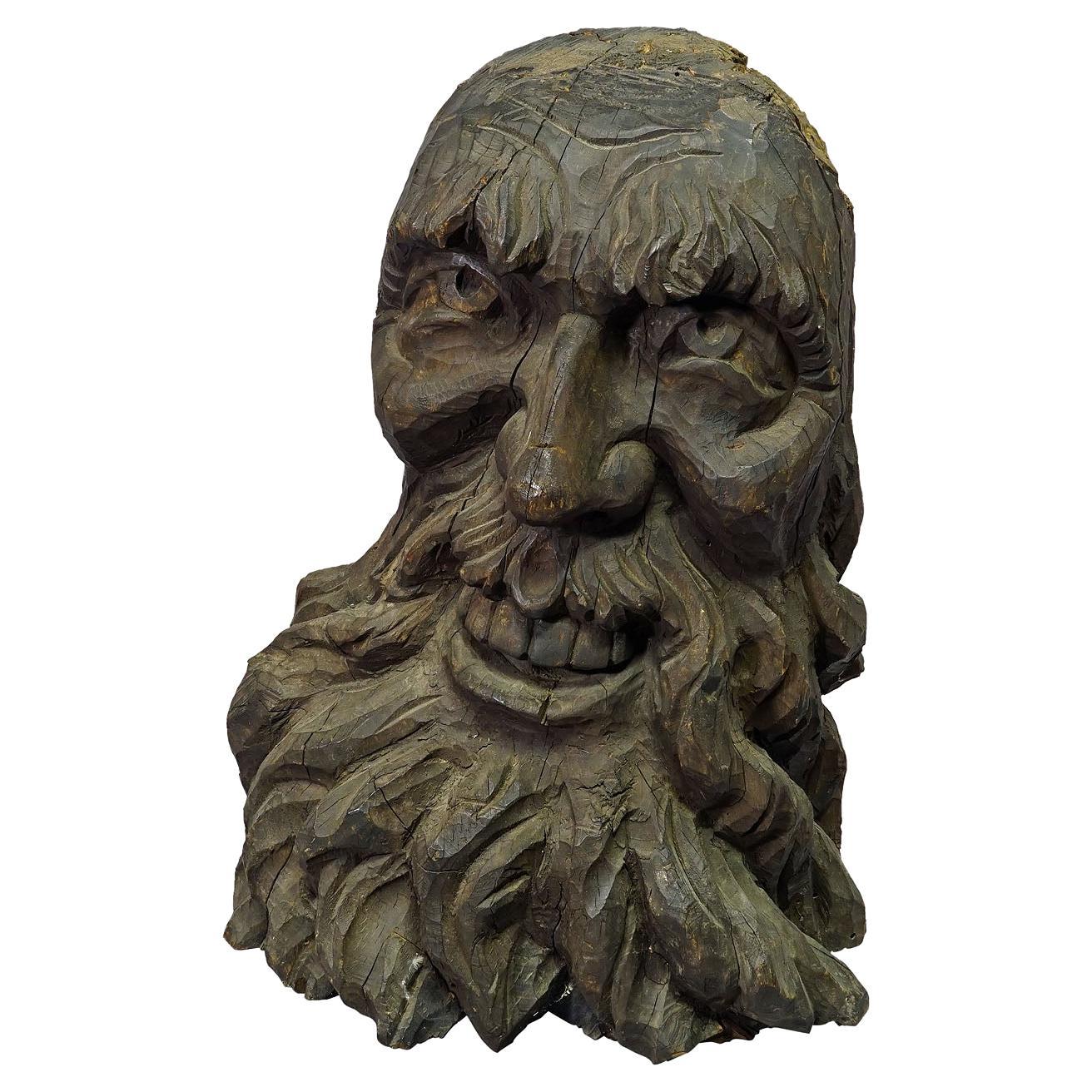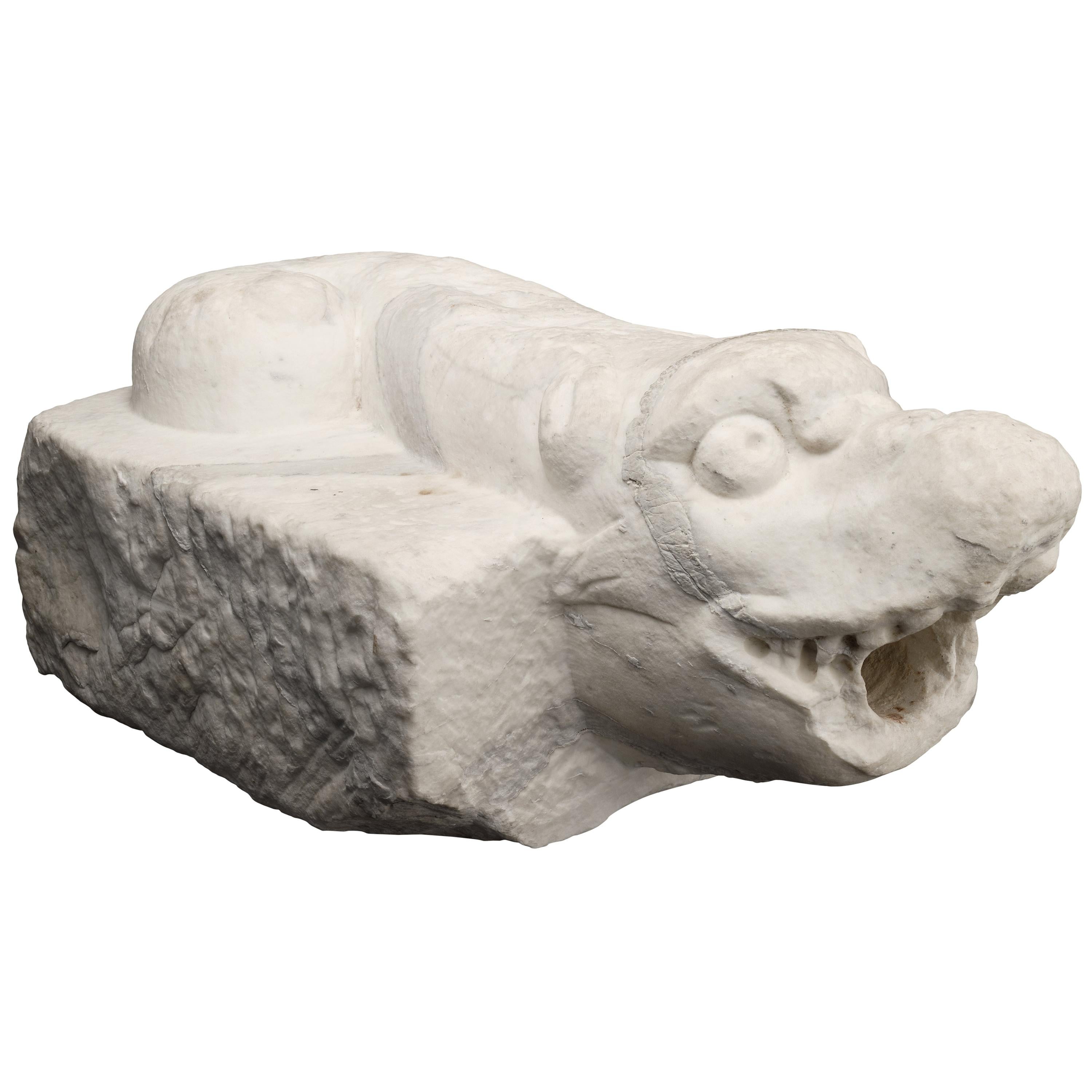Items Similar to Art Deco Era Garden Platinum Goliath Heron Crane Fountain Sculptures 6+ feet
Want more images or videos?
Request additional images or videos from the seller
1 of 14
Art Deco Era Garden Platinum Goliath Heron Crane Fountain Sculptures 6+ feet
About the Item
Magnificent pair of life-size+ bronze Goliath Heron fountain sculptures from the Art Deco era.
What sets these apart from all others is their silver plated aged patina which is now a gorgeous Platinum color.
Very fine detail in the face, plumage and legs. They stand 78in tall.
Internal copper tube from talon to beak for use as a water feature in a pond.
No damage or issues.
These would be fabulous as decor in a New York city penthouse or in the garden pond of an old English country estate. Measure: 6ft.
- Dimensions:Height: 78 in (198.12 cm)Width: 32 in (81.28 cm)Depth: 14 in (35.56 cm)
- Sold As:Set of 2
- Style:Art Deco (Of the Period)
- Materials and Techniques:
- Period:
- Date of Manufacture:1940s
- Condition:Wear consistent with age and use. beautiful aged patina.
- Seller Location:Las Vegas, NV
- Reference Number:1stDibs: LU1195232598342
About the Seller
5.0
Platinum Seller
These expertly vetted sellers are 1stDibs' most experienced sellers and are rated highest by our customers.
Established in 2006
1stDibs seller since 2015
431 sales on 1stDibs
Typical response time: 1 hour
- ShippingRetrieving quote...Ships From: Las Vegas, NV
- Return PolicyA return for this item may be initiated within 3 days of delivery.
More From This SellerView All
- Art Deco Era Pierre Jules "P.J." Mene 1810-1879 Bronze Greyhound SculpturesBy Pierre Jules MêneLocated in Las Vegas, NVA beautiful pair of bronze greyhound sculptures on marble created by sculptor Pierre Jules Mene (1810-1879). Impressed signed "P.J. MEN...Category
Antique Late 19th Century Art Deco Animal Sculptures
MaterialsMarble, Bronze
- Huge French Art Deco Era Polychrome Toy Soldier LampBy Jacques AdnetLocated in Las Vegas, NVArt Deco era hand sculpted and painted toy soldier table lamp. Jumbo size standing over 4-1/2 feet tall. Soldier is 36" tall. Exceptionally rare a...Category
Early 20th Century Art Deco Table Lamps
MaterialsBrass
- Modernist Surreal Era Bronze Sculpture CandleholderBy Henry MooreLocated in Las Vegas, NVForged bronze that's been hammered, stretched, twisted and formed into a surreal modernist candlestick. Removable candle cup. Stands 15" tall. Not signed, circa 1950s.Category
Mid-20th Century Mid-Century Modern Abstract Sculptures
MaterialsBronze
- Art Deco era Tiki Stylized Nubian Plaster Wall SculpturesBy Frederic WeinbergLocated in Las Vegas, NVLarge pair stylized Nubian plaster wall sculptures circa 1940's. Ebony and gold. Apposing figures slightly leaning towards one another. Each stands 27in tall. Not marked by manufact...Category
Mid-20th Century Art Deco Wall-mounted Sculptures
MaterialsPlaster
- Modernist Art Bronze Dove SculpturesLocated in Las Vegas, NVPair of plump morning doves in the style of Barbara Hepworth. Done in bronze, signed in cast on the inside of smallest (pictured) They retain a wonderfu...Category
Mid-20th Century Mid-Century Modern Abstract Sculptures
MaterialsBronze
- Art Deco Era Artisan Hammered Brass CachepotLocated in Las Vegas, NVHand-hammered brass cachepot with the most amazing aged patina, circa 1940s. Fine quality artisan piece. Stamped on bottom as pictured. Stands 14" with a 12" opening.Category
Early 20th Century Art Deco Planters, Cachepots and Jardinières
MaterialsBrass
You May Also Like
- Large Patinated Bronze Fountain with Heron SculpturesLocated in London, GBThis wonderful patinated bronze work is designed to function as both a water fountain and a superb piece of sculpture. The item will be well-suited to either an indoor or outdoor setting. The piece takes the form of two herons...Category
20th Century French Anglo-Japanese Fountains
MaterialsBronze
- 19th Century Large Circular Garden Fountain Neptune, Italian Limestone FountainLocated in West Palm Beach, FLMonumental antique Italian three-tiered garden fountain. Four Cariatidi surround the center base raising the water which spells from the waved shells. The second tier is supported by...Category
Antique Early 19th Century Italian Baroque Fountains
MaterialsLimestone
- Nude Male Bronze Sculpture FountainLocated in Malibu, CABronze male sculpture signed. Fonderia Giorgio Sommer Calabritto Napoli Thomas, sculptor, lived and worked in the Naples area, and especially on Capri, from 1889 to 1906. Given this ...Category
20th Century Italian Renaissance Figurative Sculptures
MaterialsCarrara Marble, Bronze
- American Cast Bronze Garden Fountain with Figural Boy Holding Koi Fish. C. 1870Located in Hollywood, SCAmerican cast bronze garden fountain with standing figural boy holding Koi fish on a two-tiered shell form scrolled base with turtle at his feet, Late 19th century.Category
Antique 1870s American American Empire Fountains
MaterialsBronze, Copper
- Wooden Carved Black Forest Garden Fountain Water Spout 19th centuryLocated in Berghuelen, DEWooden Carved Black Forest Garden Fountain Water Spout 19th century A large Black Forest wooden carved water spout featuring "Ruebezahl", which is the mountain spirit of the giant m...Category
Antique Late 19th Century German Black Forest Fountains
MaterialsWood
- Italian Ancient Marble Sculpture Fountain, Late 16th CenturyLocated in Milano, ITSea monster Carrara marble mouth fountain Italy, late 16th century It measures 13.8 x 31.5 x 18.9 in (35 x 80 x 48 cm) State of conservation: some small evident gaps and widespread signs of wear due to outdoor exposure. The gray marks crossing it do not come from restoration, but are rather the natural veins of the marble. This work has some morphological characteristics typically associated with the iconography of the sea monster: an elongated muzzle, sharp teeth, protruding eyes, elongated ears, and a coiled serpent's tail. An in-depth series of studies on artistic depictions of the sea monster attempted to verify how this symbol evolved in antiquity in the European and Mediterranean contexts and how it gradually changed its image and function over time. The iconography itself is mutable and imaginative and its history is rich with cultural and artistic exchange, as well as the overlapping of ideas. This occurred so much that it is difficult to accurately pinpoint the "types" that satisfactorily represent its various developments. However, we can try to summarize the main figures, starting from the biblical Leviathan and the marine creature that swallowed Jonah (in the Christian version, this figure was to become a whale or a "big fish", the “ketos mega”, translation of the Hebrew “dag gadol”). Other specimens ranged from the dragons mentioned in the Iliad (which were winged and had legs) to "ketos” (also from Greek mythology), the terrifying being from whose Latinized name (“cetus”) derives the word "cetacean". See J. Boardman, “Very Like a Whale” - Classical Sea Monsters, in Monsters and Demons in the Ancient and Medieval Worlds, in Papers presented in Honor of Edith Porada, Mainz am Rhein 1987, pp. 73-84). In Italy the monster underwent yet further variations: it can be found in Etruscan art on the front of some sarcophagi representing the companion of souls, while among the Romans we find the “Pistrice” (cited by Plinio in Naturalis Historia PLIN., Nat., II 9, 8 and by Virgilio in Eneide: VERG., Aen., III, 427), which appeared in the shape of a stylized hippocampus or a very large monstrous cetacean and evolved into a hideous being with a dragon's head and long webbed fins. During the Middle Ages, the sea monster was the object of new transformations: at this time, it is often winged, the head is stretched like a crocodile, the front legs are often very sharp fins - sometimes real paws - until the image merges with dragons, the typical figures of medieval visionary spirituality widely found throughout Europe (on this topic and much more, see: Baltrušaitis, J., Il Medioevo fantastico. Antichità ed esotismi nell’arte gotica, Gli Adelphi 1997). In Italy during the 15th and 16th centuries, the revival of classicism - representative of the humanistic and Renaissance periods - led to a different reading of these "creatures". Indeed, the sea monster was also to find widespread use as an isolated decorative motif, especially in numerous fountains and sculptures where dolphins or sea monsters were used as a characterizing element linked to water (on this theme see: Chet Van Duzer, Sea Monsters on Medieval and Renaissance Maps, London, The British library, 2013). From the morphological point of view, the "sea monsters" of this period are mostly depicted as hybrid figures, in which the body of a mythological or real being (a hippocampus, a sea snake, a dolphin), is joined to a head with a rather indistinct appearance. It was usually characterized by large upright ears, an elongated snout, sharp teeth and globular, protruding eyes; a complex and indefinite figure, both from the symbolic point of view and from that of its genesis. The work we are examining is placed as a cross between the medieval sea serpent and the Renaissance dolphin, with stylistic features which recall the snake as often used in heraldry (such as the "snake" depicted in the coat of arms of the Visconti - the lords and then dukes of Milan between 1277 and 1447 - and which, for some, may be derived from the representations of the “Pistrice” that swallowed Jonah). In the search for sources, Renaissance cartography and in particular woodcuts should not be neglected. See for example the monsters of Olaus Magnus, from the editions of the “Historia de gentibus septentrionalibus” (“History of the peoples of the north”) and the natural histories of Conrad Gesner, Ulisse...Category
Antique 16th Century Italian Renaissance Animal Sculptures
MaterialsCarrara Marble
Recently Viewed
View AllMore Ways To Browse
No Era
Art Deco Era
Estate Garden
Bronze Era
Old English Vintage
Garden Sculpture Pair
Vintage Country Garden
Gold Fountain
Building Elements Decor
Country Estate
Vintage Water Stand
Old Vintage Decor
English Country Garden
English Country Estate
Life Size Garden Sculpture
Gold Cranes
Vintage Country Decor
Pair Of Crane





